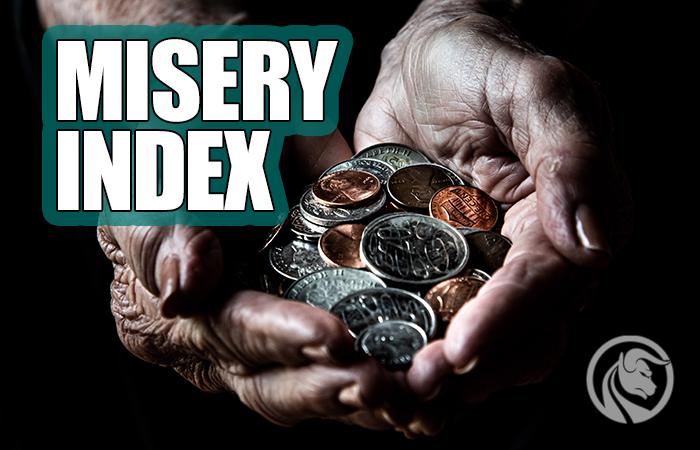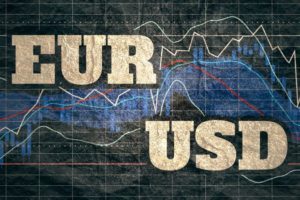The poverty index - what it is and what it informs us of
There are many indicators that try to measure the level of economic development or wealth of societies. One of the less known is Index of Povertywho is trying to measure how strong he is the effect of economic hardships affecting society. One of the most important of them is unemployment and inflation. The high unemployment rate means that not everyone can find a job, which means that household incomes in a given country are under pressure from lower incomes. In turn, an increase in the inflation rate causes an increase in the cost of living. The poverty index was popular in the years of stagflation, when many advanced economies struggled with higher inflation and a relatively high unemployment rate.. During these years, effectiveness began to be questioned "Philips curve".
Key conclusions from the article:
- The index was created by Arthur Okun,
- The index is created as a result of the sum of the inflation rate and the unemployment rate,
- The higher the index, the greater "poverty" affects the average citizen,
- Currently, additional components are included in the index, such as interest rates on loans,
- The indicator is simple to build, but not precise.
What is the Misery Index
The classic poverty index consists of two components: inflation and unemployment rate. In the simplest sense, inflation is the loss of purchasing power by households as a result of rising consumer prices. In turn, the unemployment rate affects the budget of households in two ways. Firstly, some members of the household cannot find a job, which lowers the family income. Additionally, the high unemployment rate lowers the wage pressure, which means that nominal wages do not rise quickly. That's why, that the index is the sum of the inflation rate and unemployment rate the high value of the Misery Index may result from:
- High unemployment rate and high inflation,
- High inflation and low unemployment rate,
- High unemployment and low inflation.
As a rule, economists consider an economy to be in full employment when the unemployment rate is 4-5%. On the other hand, the inflation target for many countries ranges from 2-3%. As a result, the "optimal" poverty rate should be between 6% -8%.
The Story of Index of Poverty and Arthur Okun
The poverty index was compiled by the economist Arthur Okun, who used the simple sum of the inflation rate and the unemployment rate. He concluded that such a composition of the index would allow for examining the "health" of the economy. The lower the index, the better the condition of the national economy.
Arthur Okun was chairman of the US Council of Economic Advisers (CEA) during the presidency of Lyndon Johnson from 1968 to 1969. He was also a professor at Yale University. In addition to the poverty index, He also formulated the relationship between the unemployment rate and the Gross Domestic Product (GDP). It was named Okun's law in honor of the explorer. It says that an increase in the unemployment rate above the "natural level" has a negative impact on the level of GDP.
The popularity of the poverty index began in the XNUMXs after President Nixon suspended the convertibility of the US dollar to gold. This was one of the reasons why the US economy struggled with high unemployment and high inflation over the next few years. These times were called "stagflation", which is a combination of the words stagnation and inflation. These years have eroded belief in the strength of the Philips curve, which said inflation and unemployment were working in opposite directions. According to this law, a drop in the unemployment rate causes an increase in inflation, while an increase in the unemployment rate reduces the pressure on price increases. According to this theory, there should be no situation in which there is a high unemployment rate and high inflation. However, the period of stagflation was something unheard of in post-war economic history. American citizens have experienced high unemployment and high inflation. As a result, the poverty index gained popularity in the political debate.
During the 1976 campaign, Jimmy Carter (one of the candidates) popularized the poverty index to criticize his opponent, Gerald Ford. The Misery Index then reached the level of less than 13%, which was much above the “optimal” level of the indicator, which was the range of 6-8%. Meanwhile, during the next election campaign, Ronald Regan used the indicator to criticize President Carter.
Poverty Indicator - Limitations
The simplicity of the mentioned index is also its disadvantage, because it leads to the fact that its indications are not as precise as more "sublime" variants of indicators measuring the "health" of the economy. Here are some of the disadvantages of the poverty index:
- One of the disadvantages of the index is its "blindness". An example is the unemployment rate, which does not measure the level of unemployment in the entire population, but only in the group of people actively seeking it. For this reason, people who have lost their job and stopped looking for it are not considered unemployed.
- Another problem is the interpretation of the inflation level. Periods of very low inflation, and even deflation, are "good" according to the poverty index, but may be a sign of stagnation in the economy, not of its health. A good example is Japan, which has been struggling to increase inflation for many years. However, the effects of government actions in Japan are meager.
- The third disadvantage is also that they treat the rise in inflation and the unemployment rate equally. However, an increase in the unemployment rate of 3 percentage points has a greater effect on "poverty in society" than an increase in the inflation rate of 3 percentage points.
As you can see, the very simplification of the index affects the "interpretation traps" that are built into the Misery Index. His "blindness" to the nuances of the interpretation of the unemployment rate and inflation means that the result of adding these two components does not carry extensive conclusions about the "condition" of the economy.
Criticism of the index
Even aside from its simplicity, some economists believe that the index does not present all the fundamental variables to define "poverty" in a society.
- One of the most serious allegations is the lack of information on economic growth, as GDP growth does not translate 1: 1 into a decline in unemployment.
- At the same time, the drop in unemployment itself does not say what the salaries are in the economy. There is also no information as to whether real wages are rising (nominal wage increases after "subtracting" the effects of inflation).
- The index also excludes the impact of the "social safety net", which varies from country to country. Allowances or vouchers can "soften" the impact of a worse economic situation in accordance with the principle of "automatic stabilizers of the economic situation".
- Another problem is the lack of information on expectations about future inflation and unemployment.
New versions of the poverty indicator
Several modernized indicators have been introduced as a result of allegations of the "classic" poverty index. One of them was an index developed by Harvard economist Robert Barro. In 1999, he created the "Barro Misery Index", which added two other components to the index, i.e. the interest rate on consumer loans and the gap between the current and potential GDP.
In 2011, a modified Barro index was created. The creator of the next modification was Steve Hanke, whom the poverty index is the sum of the unemployment rate, inflation and interest on debt minus the change in real GDP per capita. In 2020, the index created by Steven Hanke grouped 156 countries within HAM (Hanke's Annual Misery IndexAccording to HAMI, the higher the ranking, the greater the poverty level affects the population of a given country or region.
In 2020, she was the undisputed leader of the indicator Venezuela with a shameful value of 3827,6. This result was made up of high inflation (3713,3%), high unemployment (50,3%), and the interest rate on loans (33,1%). At the same time, real GDP growth per capita was negative (-30,9%). The next places in the ranking were Zimbabwe (547) and Sudan (193,9)
At the other end of the list are countries and regions where "poverty" is very low. The smallest rate is there Guiana, which is a bit of a surprise. This country's result was -3,3. The negative factor was strongly influenced by the increase in real GDP per capita (+ 25,8%), which significantly decreased the sum of the unemployment rate (11,8%), inflation (1%) and the interest rate on loans (9,7%). In the next places ("from the end") there are Taiwan (3,8), Qatar (5,3) and Japan (8,0).






















![Forex Club – Tax 9 – Settle tax on a foreign broker [Download the Application] Forex Club - Tax 9](https://forexclub.pl/wp-content/uploads/2024/02/Forex-Club-Podatek-9-184x120.jpg?v=1709046278)
![Trading View platform – solutions tailored to the needs of traders [Review] trading view review](https://forexclub.pl/wp-content/uploads/2024/03/trading-view-recenzja-184x120.jpg?v=1709558918)
![How to connect your FP Markets account to the Trading View platform [Guide] fp markets trading view](https://forexclub.pl/wp-content/uploads/2024/02/fp-markets-trading-view-184x120.jpg?v=1708677291)
![How to invest in ChatGPT and AI? Stocks and ETFs [Guide] how to invest in chatgpt and artificial intelligence](https://forexclub.pl/wp-content/uploads/2023/02/jak-inwestowac-w-chatgpt-i-sztuczna-inteligencje-184x120.jpg?v=1676364263)


![WeWork – the anatomy of the collapse of a company valued at $47 billion [WeWork, part II] wework bankruptcy story](https://forexclub.pl/wp-content/uploads/2024/04/wework-bankructwo-historia-184x120.jpg?v=1711729561)
![Adam Neumann – the man who screwed up Softbank [WeWork, part AND] adam neumann wework](https://forexclub.pl/wp-content/uploads/2024/04/adam-neumann-wework-184x120.jpg?v=1711728724)





![How to transfer shares to another brokerage office [Procedure description] how to transfer shares to another brokerage house](https://forexclub.pl/wp-content/uploads/2024/03/jak-przeniesc-akcje-do-innego-biura-maklerskiego-184x120.jpg?v=1709556924)

![The most common mistakes of a beginner trader - Mr Yogi [VIDEO] Scalping - The most common mistakes of a beginner trader - VIDEO](https://forexclub.pl/wp-content/uploads/2024/03/Scalping-Najczestsze-bledy-poczatkujacego-tradera-VIDEO-184x120.jpg?v=1711601376)
![Learning patience: No position is also a position - Mr Yogi [VIDEO] Scalping - Learning patience - No position is also a position - VIDEO](https://forexclub.pl/wp-content/uploads/2024/03/Scalping-Nauka-cierpliwosci-Brak-pozycji-to-tez-pozycja-VIDEO-184x120.jpg?v=1710999249)
![When to exit a position and how to minimize losses - Mr Yogi [VIDEO] Scalping - When to exit a position and how to minimize losses - VIDEO](https://forexclub.pl/wp-content/uploads/2024/03/Scalping-Kiedy-wyjsc-z-pozycji-i-jak-minimalizowac-straty-VIDEO-184x120.jpg?v=1710336731)

















